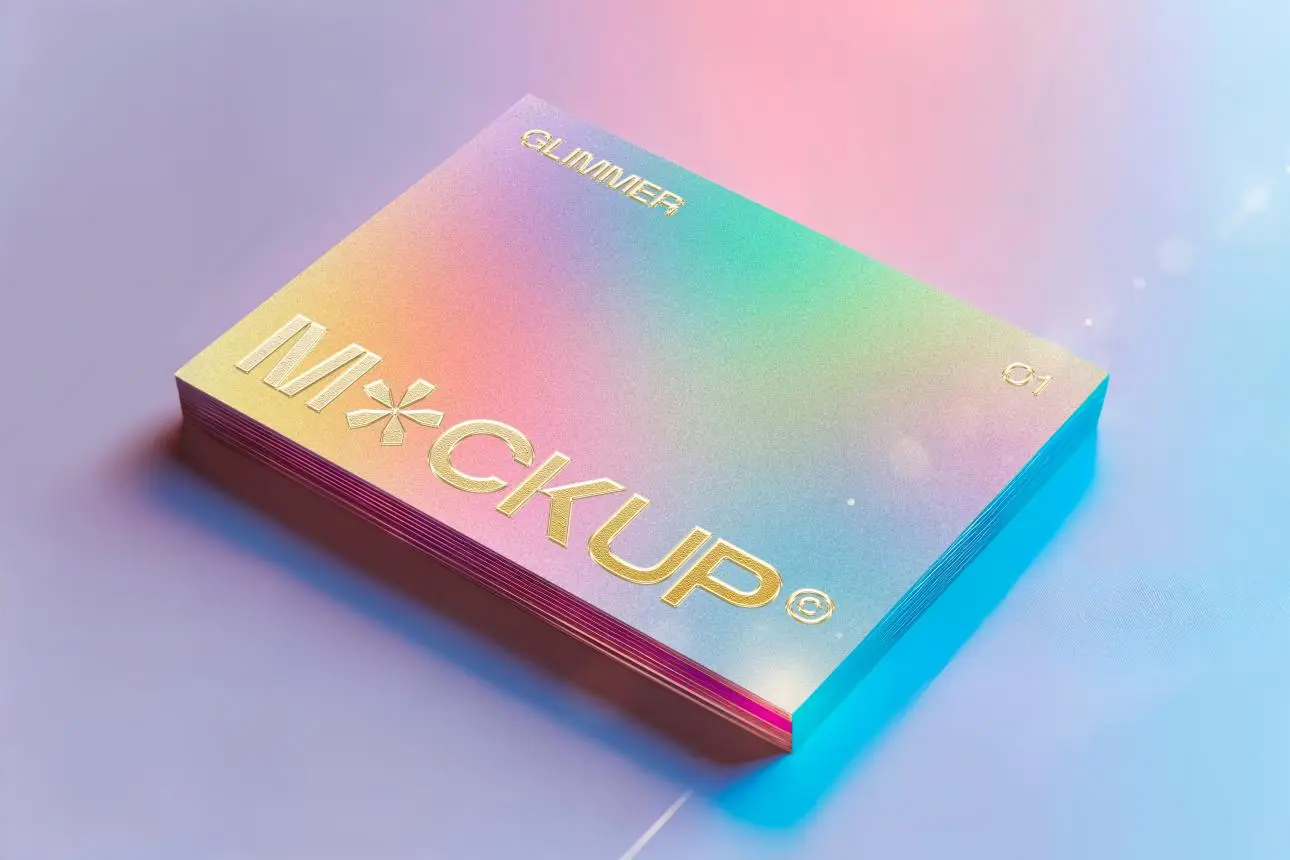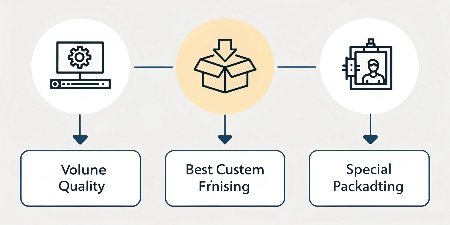Struggling to pick a printing method for your packaging? You want stunning cosmetic boxes, but the options are confusing, risking a look that doesn't match your brand's quality.
The best printing method depends on your order volume, design complexity, and budget. Offset printing offers superior quality for large runs, while digital printing is ideal for short runs and customization. For special textural effects, screen printing is a fantastic choice.

Choosing the right printing technique is a critical decision in my line of work. It affects everything from color vibrancy and brand consistency to the final cost per unit. After 16 years in this industry, I've seen how the right choice can make a product fly off the shelves. Let’s break down the most popular options so you can make the best choice for your project.
Is Offset Printing the Gold Standard for Luxury Cosmetic Boxes?
You need flawless, consistent color for a huge order. But you're worried about high setup costs and long lead times. How do you get premium quality without overspending on production?
Offset printing is the industry standard for high-volume, premium cosmetic boxes. It delivers unmatched color accuracy and a crisp, professional finish, making it the most cost-effective solution for large production runs (typically over 1,000 units) where quality is the top priority.

In my experience, major beauty brands almost always rely on offset printing for their main product lines. The reason is simple: consistency. When you're producing tens of thousands of boxes, you need every single one to look identical, with perfect color matching to your brand's official Pantone shades. This method involves creating custom metal plates for each color in your design. The ink is transferred from these plates to a rubber blanket and then pressed onto the paper. It's a setup-intensive process, but once it is running, it’s a highly efficient machine.
Why It Excels in Quality
The liquid ink used in offset printing absorbs into the paper stock, creating rich, deep colors and incredibly sharp details. This is crucial for cosmetic packaging, where high-resolution imagery and fine text are common. It allows for precise reproduction of gradients and subtle color shifts that other methods might struggle with. The quality is simply top-tier.
Cost and Volume Considerations
The main hurdle with offset is the upfront cost of creating the plates. However, this cost is spread out over the entire run. This is why for any order over 1,000 pieces, the price per box becomes significantly lower than digital printing.
| Feature | Description |
|---|---|
| Color Accuracy | Excellent. The best option for precise Pantone (PMS) matching. |
| Image Quality | Very high resolution with crisp, clean lines and details. |
| Unit Cost | Low for large quantities (1000+ units). |
| Setup Cost | High due to the creation of custom printing plates. |
| Best For | Large production runs, brand consistency, and premium quality. |
When Does Digital Printing Outshine Traditional Methods for Cosmetics?
Launching a new product line with multiple variations? The cost of making printing plates for each unique design is terrifying. You need a flexible, affordable solution for smaller quantities, fast.
Digital printing is perfect for short runs, prototypes, and projects requiring personalization, like limited editions or influencer kits. It eliminates plate costs and offers a fast turnaround, making it ideal for startups and market testing where speed and flexibility are essential.

I remember working with a new skincare startup that needed only 200 boxes for a limited product launch. They had three different scents, each requiring a slightly different box design. If they had chosen offset, the plate costs for three separate designs would have been a deal-breaker. We went with digital printing. There were no plate costs, the turnaround was just a few days, and they received beautiful, vibrant boxes that looked amazing on their social media. It allowed them to test the market without a huge upfront investment, proving how powerful this technology is.
The Power of Flexibility
Digital printing works much like a desktop inkjet printer, but on a massive, highly advanced scale. It applies ink directly from a digital file onto the paper. This process makes it incredibly easy to print multiple design variations in a single run—a feature known as Variable Data Printing (VDP). This is perfect for personalizing boxes with names, creating numbered limited editions, or simply testing different color schemes.
Quality and Limitations
Modern digital presses produce amazing quality, often nearly indistinguishable from offset for the average consumer. However, for designers with a keen eye, there can be slight differences. Pantone color matching is simulated using a CMYK process, so it may not be as precise as the mixed inks used in offset. It's also less cost-effective for very large runs, as the price per unit doesn't decrease as dramatically with volume.
| Feature | Description |
|---|---|
| Setup Cost | Very low to none, as no plates are required. |
| Turnaround Time | Fast, ideal for tight deadlines. |
| Variable Data | Excellent. Each box can be printed with a unique design. |
| Unit Cost | Cost-effective for short runs (under 1000 units). |
| Color Matching | Good, but Pantone matching is a simulation and may vary slightly. |
Could Screen Printing Add That Unique, Premium Touch to Your Boxes?
Your box design looks great, but it's missing that "wow" factor. You want a tactile, luxurious finish that makes your product stand out on the shelf, but you're not sure how.
Screen printing is a specialty method used to apply thick, vibrant layers of ink or special finishes like Spot UV or metallic effects. It adds a premium, tactile dimension that is perfect for making logos or key design elements pop right off the box.

For a high-end client creating a luxury face cream, we wanted the logo to not just be seen, but felt. The main box was printed using offset for the background colors and text. Then, we used screen printing to apply a thick, raised, glossy varnish (Spot UV) over just the logo. When customers picked up the box, their thumb would naturally run over this smooth, raised surface. It created an immediate sensory connection to the brand and signaled a premium product before it was even opened. This is where screen printing truly shines.
Creating a Sensory Experience
Screen printing works by pushing ink through a fine mesh screen stencil onto the paper. This process allows for a much thicker layer of ink to be applied compared to other methods. This is why it's perfect for creating textures, ultra-vibrant opaque colors (especially on dark paper), and special effects like glitter, metallic inks, or Spot UV finishes. It’s less about printing the entire box and more about adding those specific, high-impact details that elevate the entire design.
When to Use It
This method is not suited for printing fine details or photographic images due to the nature of the mesh screen. Instead, it should be used strategically. Think of it as an accent, not the main event. It is excellent for bold graphics, logos, and patterns where you want to achieve a unique visual and tactile effect.
| Feature | Description |
|---|---|
| Ink Opacity | Excellent. Creates very vibrant, opaque colors. |
| Special Effects | The best choice for Spot UV, textures, glitter, and metallics. |
| Cost | Higher cost per application, best used for accents. |
| Level of Detail | Not suitable for fine text or photographic images. |
| Best For | Adding specific, high-impact, and tactile design elements. |
How Do You Choose the Right Printing Method for Your Project Budget and Volume?
Feeling overwhelmed by the technical choices? You need a clear path to select the right printing method based on your specific project needs, but it's hard to weigh all the factors.
To choose, first define your priorities. For high volume and top quality, pick offset. For speed and small runs, choose digital. For special tactile finishes, add screen printing. Often, combining methods gives you the ultimate custom packaging that balances cost and branding.

I often tell designers to think of it as a triangle of priorities: Quality, Cost, and Speed. You can usually pick two. Offset gives you amazing quality and low per-unit cost on large runs, but it's not the fastest. Digital gives you incredible speed and flexibility, ideal for low costs on small runs. Screen printing is all about adding that unique, high-quality touch, but it's a specialty process. The best choice always comes back to the specific needs of your project.
Question 1: What is Your Order Quantity?
This is the first and most important question. If you need more than 1,000 units and plan to reorder, offset printing is almost always the most economical and consistent choice. For anything less, or for a one-time promotional run, digital printing will save you from high setup fees.
Question 2: What is Your Design Complexity?
Does your design require perfect Pantone color matching and ultra-sharp text? Go with offset. Do you need to print 10 different versions of the design in one run? Digital is your only answer. Do you want to add a glossy, raised logo? That’s a job for screen printing, likely used in combination with another method.
Question 3: What is Your Brand's Vibe?
Is your brand an established giant that values unwavering consistency? Offset is your foundation. Are you a nimble startup that needs to move fast and test new ideas? Digital provides that agility. Is your brand a luxury player that wants to communicate premium quality through touch? Incorporating screen printing is a must.
| Method | Best for Volume | Key Strength | Main Drawback |
|---|---|---|---|
| Offset | 1,000+ units | Unmatched Quality & Consistency | High Initial Setup Cost |
| Digital | Under 1,000 units | Speed & Flexibility | Higher Per-Unit Cost at Scale |
| Screen | Any (for accents) | Unique Tactile Effects | Slower & Costly for Full Coverage |
Conclusion
Choosing the right print method is about matching it to your project's volume, budget, and design goals. Each technique offers unique strengths to make your cosmetic boxes truly stand out.






